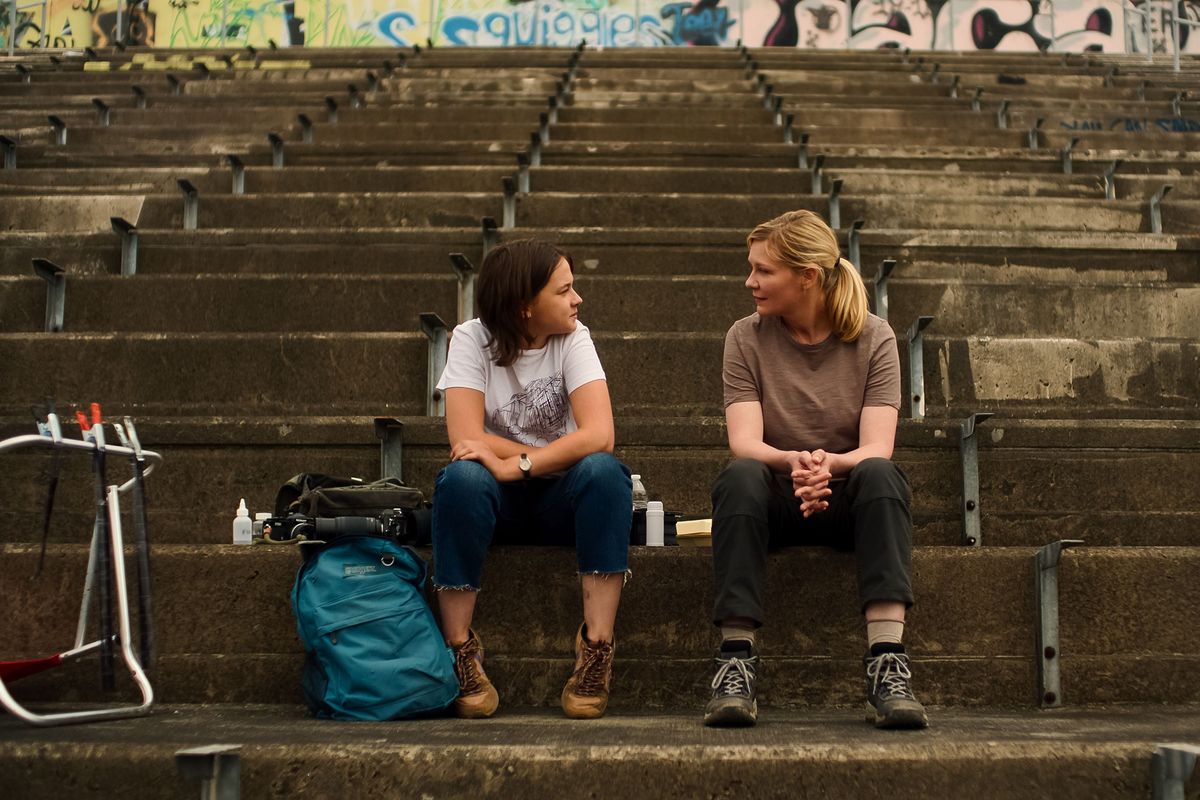Movie review: ‘Civil War’ well-crafted but has nothing to say

With the title “Civil War,” a poster featuring Lady Liberty’s torch transformed into a sniper perch, and a release date in a U.S. election year, it would appear that English writer-director Alex Garland is courting controversy with his fourth feature film. But “Civil War” could only be truly controversial or divisive if it had anything at all to say. In this splashy, provocative yarn about photojournalists on the front lines of an imaginary war, Garland declines to share any trenchant insights he might have on the nuances of American politics.
“Civil War” has all the nutritional value of popcorn – it’s nothing more substantive than pure entertainment, though it is very entertaining. It’s exceedingly well-made and bracing, arresting and shocking, sometimes funny and sometimes stomach-turning. If you can hang with it, the movie is a good hang, a well-crafted piece of pulp that just so happens to use this seemingly plausible conflict as a backdrop.
This is a road movie about steely war correspondents hardened by the ugly things they’ve seen through their lenses, coping with booze and gallows humor. “We don’t ask questions. We record things so other people can ask the questions,” intones Lee (Kirsten Dunst), a veteran combat photographer, in one of the many lessons she imparts on a protege, Jessie (Cailee Spaeny). It’s a statement that effectively allows Garland to wash his hands of responsibility to political commentary. We are aligned with the journalists who are simply there to capture the action. Shoot first, ask questions later, or, not at all.
The plot of “Civil War” mimics “The Wizard of Oz,” as Lee, Jessie, Joel (Wagner Moura) and Sammy (Stephen McKinley Henderson) hit the road from New York to Washington, D.C., in search of an impossible interview. They’re off to see the president, the embattled president of the USA (Nick Offerman). On their journey, they encounter obstacles, foes and surreal scenes of American wreckage in settings of banal suburban consumerism and leisure.
Battle-scarred Lee has closed herself off in order to perform, but opens up with young Jessie in tow. She sees herself in her, and in protecting Jessie she can protect her younger self. Dunst is spectacular in a performance within a performance – Lee presents herself as deadpan and dead-eyed just to do her job, though emotion cracks through as the situation escalates the closer they get to the Capitol.
The civil war in question involves the secessionist states of Texas and California, which form “the Western Front,” as well as a few other insurrectionist states like Florida. What the Western Front stands for is never explained (nor how these states allied with each other). The film is devoid of real issues, but rich with edgy American symbolism. Wouldn’t it be crazy if someone fired an RPG into the Lincoln Memorial? Waged war in a suburban office park wearing Hawaiian shirts and cargos? If those Hawaiian shirts are a nod to the infamous Boogaloo Boys, should we sympathize with the Western Front because the journalists seem to? Oops, asking questions again.
Joel tries to ask his own questions, which a couple of Western Front fighters brush off with a sarcastic sneer. Someone’s shooting at them, so they’re shooting back, which is seemingly the entire crux of this conflict. Perhaps that lack of explanation is Garland’s message about the absurdity of war.
Yet, “Civil War” doesn’t feel anti-war because everyone seems to be having so much fun. Rob Hardy’s cinematography is crisp, saturated and favors epic compositions. Among the booming, atonal sound design, Garland editorializes with a few cheeky needle drops. We see the battles through the lenses of Lee (shooting color digitals) and Jessie (black-and-white film), their shots stuttering through the firefights, freezing fighters in epic poses. Warriors grin over their kills. Even the refugee camps look fun.
Garland balances this punchy tone with shockingly gory images of torture, lynchings, bodies in the streets, mass graves and firing squads. But our journalist heroes are on a mission, mercenaries of their tradecraft. The film seems simultaneously a lionization of their killer instinct for eyeball-searing content and criticism of it. How many friends’ bodies do they have to walk over to get the shot?
The only time the film ever feels dangerous, or that it might potentially make a statement, is in a scene featuring Jesse Plemons, who has a gravitational screen presence. He can use his power for good or evil, and here he plays someone profoundly evil, but for what purpose, it’s unclear (vaguely, xenophobia).
“Civil War” maintains its pitch-black humor down to the last second, ultimately revealing a dry, ironic emptiness at its core. One might think this movie is the Tin Man, lacking a heart. But ultimately, it’s the Scarecrow, which has a brain but is unwilling to use it, a warning stuffed with straw.